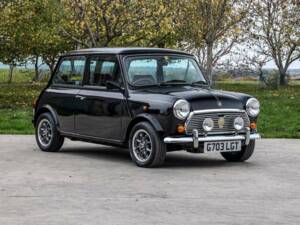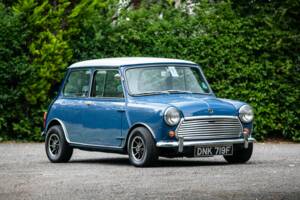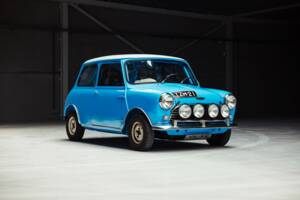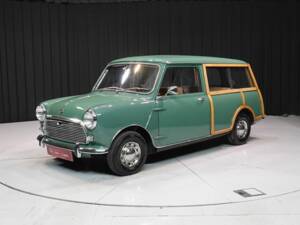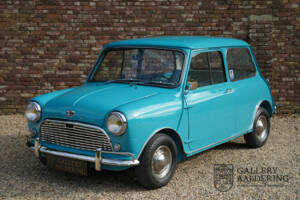Austin Mini classic cars for sale
From its debut in 1959, the Austin Mini fundamentally changed the concept of compact mobility. Engineered by Sir Alec Issigonis and known for its transverse engine and striking space efficiency, the Mini became Britain’s best-selling small car and defined an era with its individuality, versatile body styles, and motorsport triumphs. Its influence and technical innovation remain unmatched within classic car circles.
Résultats de la recherche
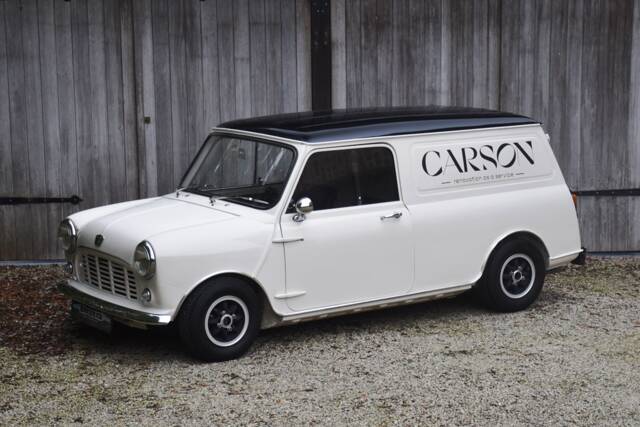
1981 | Austin Mini Van
Completely restored. The perfect eye-catcher for your business.
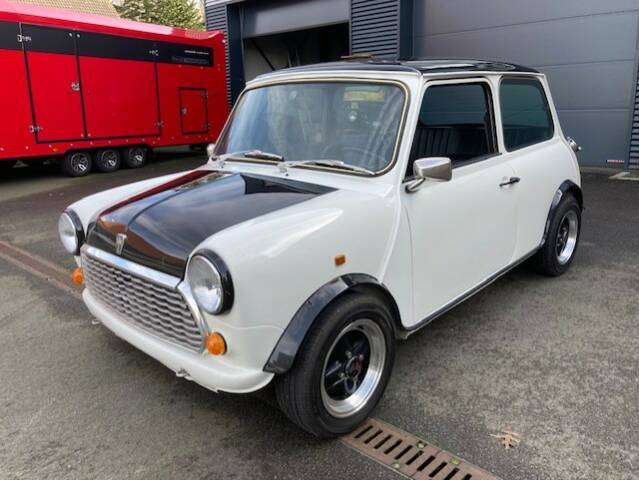
1987 | Austin Mini Mayfair
AUSTIN MINI 1000 Mayfair 1275 GT

1989 | Austin Mini Mayfair
1989 Austin Mini 30 Anniversary Edition
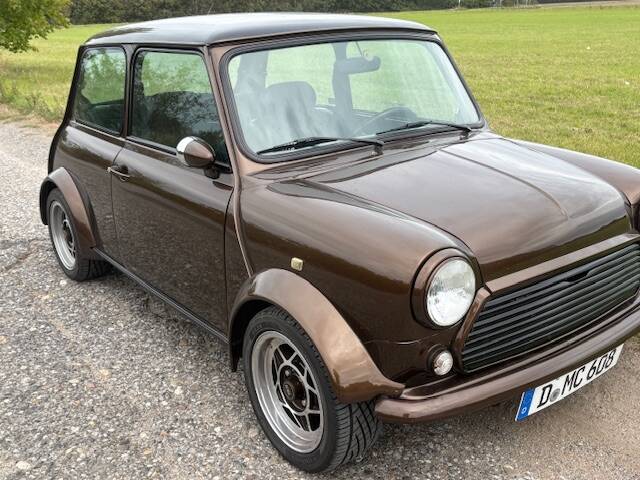
1990 | Austin Thirty
Cooper carburetor engine 1275 cc • special brown metallic paint • Moto-Lita steering wheel

1968 | Austin Mini Cooper 1000
1968 Austin Mini Cooper MkII
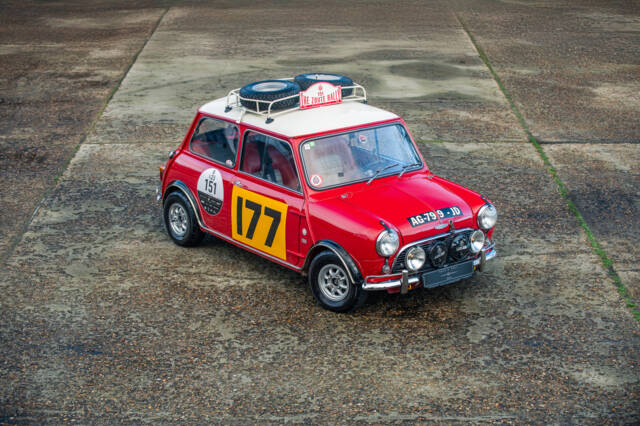
1965 | Austin Mini Cooper S 1275
Fully documented history | Fitted with the most powerful 1275cc engine variant | Includes a British Motor Industry Heritage Trust Certificate
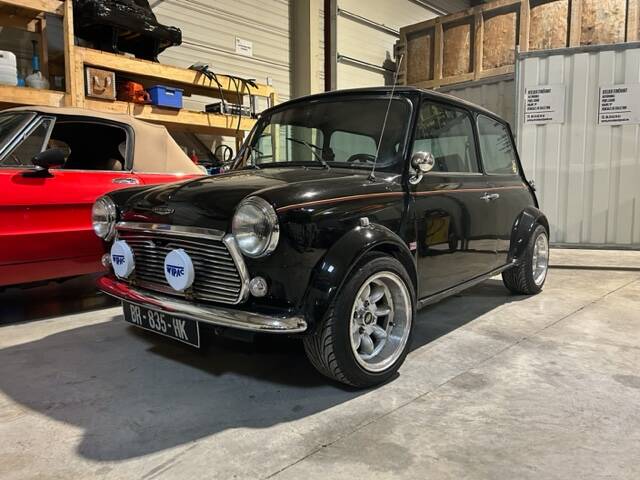

1965 | Austin Mini Cooper 998 MK1
If you speed up on curves instead of slowing down, you probably own a Mini

1969 | Austin Mini Countryman
1969 Mini Woody Countryman '69
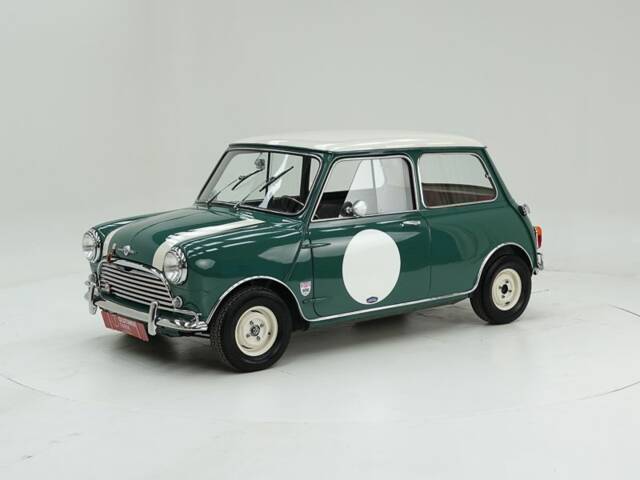
1967 | Austin Mini Cooper 1000
1967 Mini Cooper 1000 MK1 '67

1964 | Austin Seven
Austin Mini Super DeLuxe Mk1 850cc Early series "DeLuxe", Nut and Bolt restored condition, Newly ordered in Viry-Chatillon (Métropole du Grand Paris) France, Restored to original factory specifications and color scheme, Supplied with the Heritage Trust Certificate, Color scheme "Surf Blue with Blue interior",
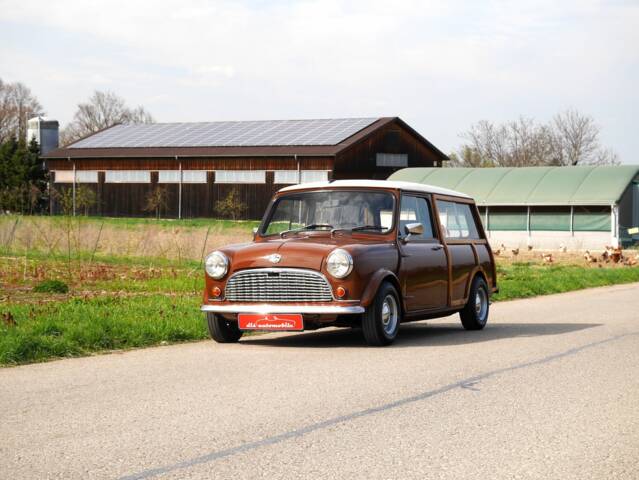
1968 | Austin Mini Countryman
Austin Mini Countryman "Woody" 850 Mk II mit "stroked" 1370ccm-Cooper Motor, seit 50 Jahren 1 (ein!) Besitzer!
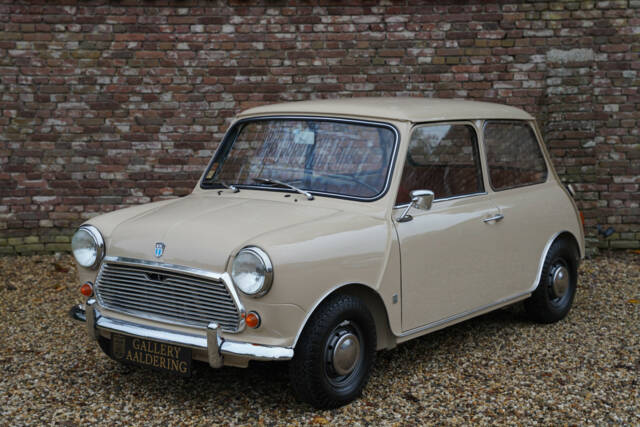
1970 | Austin Mini Cooper S 1275
Austin Mini Cooper S MkIII 1275cc "Nut&bolt" restored to factory originality, Matching numbers and colours - accompanied with British Heritage Certificate, The restoration is documented with photos, Livery from factory in "Bedouin over Autum Leaf",
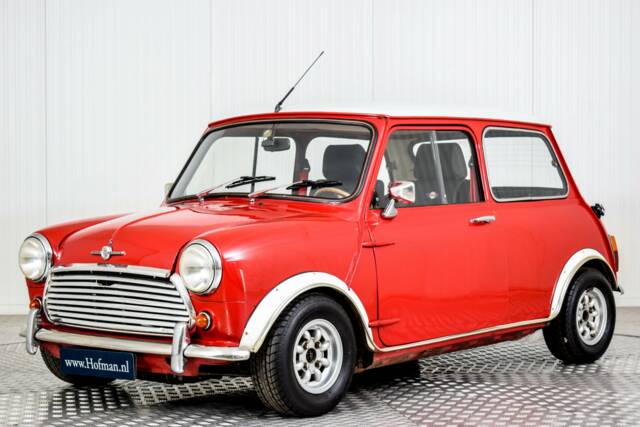
1968 | Austin Mini Cooper S 1275
MINI Cooper S 1275 Classic
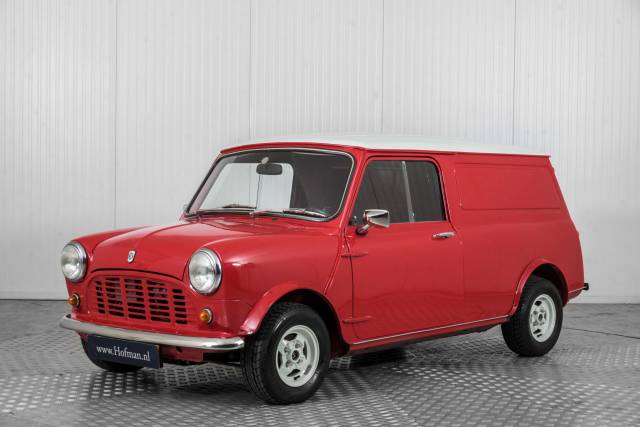
1980 | Austin Mini Van
MINI VAN 1300 .
History of the Austin Mini
The Austin Mini emerged as a direct response to the Suez Crisis of 1956, which made fuel-efficient transport a pressing necessity. British Motor Corporation’s management, led by Sir Leonard Lord, tasked Alec Issigonis to create a revolutionarily small yet practical car. Issigonis’s solution, first sketched on a napkin, was groundbreaking: a transverse-mounted engine driving the front wheels, maximising interior space for passengers and luggage. The first cars rolled out in August 1959 as the Austin Seven and Morris Mini Minor. Initial production was set in Longbridge and Cowley. The model’s light weight, minimal length of roughly 3.16 metres, and signature 10-inch wheels resulted in a nimble, highly manoeuvrable vehicle. The Mini was available in numerous configurations, serving needs from personal to commercial transport. Its cultural impact extended far beyond British roads, featuring famously in television, film, and motorsport. Competition success, highlighted by multiple overall victories at the Monte Carlo Rally during the 1960s, cemented its reputation. Production continued in evolving forms until 2000.
Model History: Generations and Evolution
The original Mini, introduced as the Austin Seven and Morris Mini Minor, underwent continual evolution across seven official generations. Early on, the Mini’s intriguing design sparked out-of-the-box variants such as the Countryman estate—with its wood-framed panels—and the van, pick-up, and Moke. Mark I Minis (1959–67) established the archetypal form, with sliding windows and external door hinges. Mark II arrived in 1967, offering changes to the grille and increased rear window size. Later, the Clubman (from 1969) introduced a squared front, targeting a broader market. The 1970s and 1980s brought the Mark III, IV, and V, marked by refinements in engineering, comfort, and emissions compliance. Engine displacements began at 848cc, with higher performance 998cc, 1,071cc, 1,275cc, and special race-tuned engines becoming available, especially in Cooper-badged models. The Mini also spread globally, adapting to numerous export regulations with different lighting and safety equipment. The nameplate outlasted its proposed successor, the Metro, which never quite captured the Mini’s unique blend of character and practicality.
Key Features and Market Share
The Austin Mini is famed for its pioneering layout—a front-mounted, transversely positioned engine paired with front-wheel drive, maximising cabin room within a compact shell. The result: more than 80% of the car’s floor space could be used for occupants and luggage. With its featherweight body (592–650 kg, depending on version) and wheel-at-each-corner stance, the Mini delivers lively road manners and a remarkable sense of interior space. Unique features include distinctive sliding windows (early models), a large thin-rimmed steering wheel, simple yet functional cabin layout, and a single central instrument cluster. No two unrestored Minis tend to be identical, thanks to an immense palette of paintwork, interior trims, mirrors, lamps, and period accessories. The Mini also holds cultural cachet, having been used by celebrities and in films like ‘The Italian Job’ and TV series ‘Mr. Bean’. Motorsport heritage, notably its wins at the Monte Carlo Rally, marks it as a true driver’s small car.
Technical Data
Special Editions and Limited Models
The Austin Mini was offered in a multitude of special editions, reflecting milestones in production and motorsport accolades. Notable examples include the Mini Cooper and Cooper S—both benefitting from John Cooper’s input in tuning and performance—plus limited editions like the Mini 25 (celebrating 25 years), Mini Mayfair, Mini 1275GT, and Mini Clubman. The Beach Car (also known as Riviera Buggy) featured basket-weave seats and was aimed at seaside resorts, while models like the Mini Speedwell and Mini Flame catered to enthusiasts seeking additional flair. Clubman and Countryman/Woody models extended the Mini’s configuration versatility, with additional cargo space and unique aesthetic touches. Specialist firms offered conversions with luxury interiors and bespoke components, heightening collectibility.
Weak Spots and Common Issues
One of the most notable concerns with older Austin Minis is body rust, especially affecting the sills, floors, doors, and rear subframes. Regular inspection and preventative rust treatment are crucial, given the thin gauge of original steelwork. Oil leaks are common, often stemming from the integration of engine and gearbox sharing lubrication. Original drum brakes (except on Cooper S and later models) may be prone to fade if not kept in top condition. Hydrolastic suspension (used in some variants) can be prone to leakage and sinking with age. Electrical systems, particularly in earlier cars, may show wear, with attention required for original wiring and connectors. Replacement parts supply is strong due to enthusiastic community and specialist support, facilitating restoration and upkeep even for more complex or rare variants.
Engine, Transmission, and Driving Experience
The driving character of the Austin Mini derives from its light kerb weight, swift steering, and unique rubber cone suspension. Even with modest power outputs, the Mini’s eager revving and immediate handling deliver a direct, engaging driving experience distinct from other period saloons. Manual four-speed gearboxes were the norm, with an optional automatic available from later generations. Top speeds ranged from 115 km/h on base models to over 170 km/h on specially tuned or racing-derived versions. Coopers and especially Cooper S variants featured improved disc brakes and closer ratio gearboxes for spirited driving. The car's low centre of gravity and minimal overhangs result in pronounced cornering ability, enabling the Mini to out-handle many larger cars of its era. Motorsport success, particularly at Monte Carlo, confirms this dynamic prowess. - MK I (1959–1967): The archetype, highly prized, accounting for the greatest share of listings and interest.
- Cooper & Cooper S: Enhanced power, brakes, and sporting appeal; rally pedigree proven with Monte Carlo victories.
- Clubman (from 1969): Distinct squared front and longer body, offering more cabin comfort.
- Countryman & Woody: Extended cargo capacity with characteristic wood bodywork.
- 1275 GT: The post-Cooper sporty option, identifiable by stripe decals and unique badging.
Design, Interior, and Accessories
Alec Issigonis’s engineering sought maximum space efficiency with minimalist forms. Early models are marked by external door hinges, sliding windows, and a central instrument pod. Clubman versions added a squared front and updated interior fittings. Materials range from vinyl and basic cloth to more upscale leatherette and unique trims in later Rover-developed editions. The palette of available colours was thought to be nearly limitless, with many cars finished with contrasting roofs, union jack motifs, or bespoke patterns. Accessories range from Webasto sunroofs, sports steering wheels, and Smiths instrument upgrades to factory-fitted or aftermarket custom alloy wheels (Minilite, Dunlop, etc.). Early estate versions featured wood trim, while the Beach Car had rattan seats. Motorsport variants are set apart by their flared arches, auxiliary lighting, and competition equipment. Export and special-market Minis came with a variety of lighting and safety adaptations. Collectors value original documentation, heritage certification, and a rich array of period-correct accessories.
Other Features and Collector Value
The Mini’s unique platform led to widespread usage not just among private buyers but also within British and Australian police services, military deployment (including certain Cooper S models), and extensive exportation: left- and right-hand-drive, US-compliant lighting, and a range of safety modifications. Documentation, matching-numbers status, and heritage certificates are sought after in the classic car scene. Spare parts availability today benefits greatly from British Motor Heritage and a busy international network of specialists, ensuring that even the rarest variants remain viable restoration projects. The Mini was voted the second most important car of the 20th century, and the breadth of specialist literature and ownership clubs demonstrates ongoing interest.
Summary
The Austin Mini managed to blend innovative engineering, practicality, and a multitude of vibrant personalities into a single shape, making it indispensable in post-war British motoring. Forty-one years of continuous production testifies both to its adaptable design and immense cultural magnetism, while global supply and collector demand underline enduring significance. Whether for period-correct restoration, weekend driving, or competitive use, the Mini’s range of configurations, motorsport legacy, and unparalleled parts support keep it at the head of the British classic car field.


